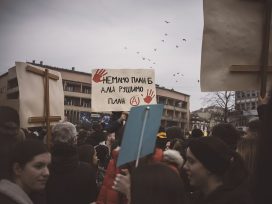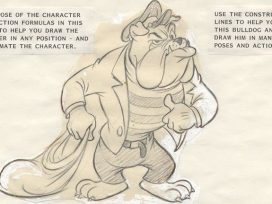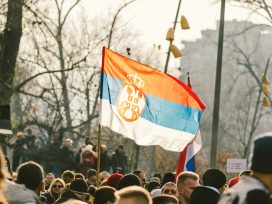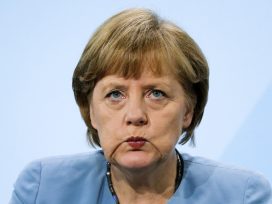Events such as the political crisis in Estonia in April 2007 do not emerge from nowhere, nor do they pass without leaving deep social traces. The Bronze Soldier affair, as it came to be known, had a long prelude that was bound up with structural problems in Estonian politics and with socio-political processes that might broadly be described as the failure of “forced Europeanization” or “forced westernization”. The result of what happened is the emergence of a much more closed and less dynamic social and democratic model, which might be termed “nationalist defensive democracy”.
The basic question is why what had previously been a fairly marginal subject should have become the centre of public debate and have ended with such a difficult resolution. It was not merely a matter of history being perceived differently by the two communities or that the Russian embassy orchestrated the whole affair. Rather, the causes should be sought in structural problems and social processes that by the beginning of this decade had come to a head in Estonia. The unbalanced party landscape and the majoritarian style of politics were the structural factors; the counter-reaction to forced Europeanization, on the other hand, was a process-related, socio-political factor. While the structural factors go a long way toward explaining why it was almost impossible to resolve the situation without rubber truncheons and water cannons, the process-related factor helps understand why one monument could have become the burning political issue of the day.
The curse of the majoritarian style of politics
First, the structural reasons. The political commentator Arend Lijphart has distinguished two models of democracy: consensual and majoritarian democracy. In the case of majoritarian democracy, one party usually has a majority in parliament. It is able to form a government alone and may negate internal opposition while in power (for example in the UK). In the case of the consensual model, what is usual are coalition governments which cannot approach problems from a position of power and have to take their partners into account, and often the opposition as well (such as in the Scandinavian countries). Today these two types have begun to become increasingly bound up with political culture and general political style. The majoritarian model is often balanced by a developed social culture of debate (as in the UK), while in a consensual democracy characteristic elements of the majoritarian political style may appear.
Although formally, Estonia – with its coalition governments and sufficiently independent parliament – may belong to those nations with consensual democracies, this is far from the case in terms of political culture. The political style in Estonia is clearly majoritarian, or to put it more plainly, steamroller politics. This is a style where the “winner takes all” and where power politics tends to take the place of negotiation and attempts at consensus. All this came out especially clearly in the crisis over the Bronze Soldier. While there can indeed be no negotiating with extremists, if a real effort had been made some sort of compromise with the more moderate elements of the Russian community could surely have been found.
The roots of majoritarian politics in the Estonia go back to the 1990s. During the independence struggle and the principle and existential choices that followed it, there was not much room for compromise and lengthy searches for consensus. Steamroller politics generally turned out to be completely justified and effective. Evidently, some people had a faint hope that by the twenty-first century Estonia’s political culture would somehow have transformed. The events of April proved convincingly what political scientists had known for a long time: that political culture is a phenomenon that changes very slowly.
Nevertheless, it might all have happened less forcedly if the Estonian political parties had been more or less evenly balanced between right and left. However contemporary Estonian politics is characterized by merciless competition between two similar-looking rightwing parties: the national conservative IRL (Union of Pro Patria and Res Publica) and the Reform Party (the neoliberal party of the current prime minister Andrus Ansip). It is a fact that the Bronze Soldier crisis was part of the Reform Party’s strategy to squeeze out the IRL, which was formerly the main promoter of nationalism. If the party landscape in Estonia were more balanced, our leading parties would not be jostling over “who has the harder nationalist line”. If discussion were more focused around economic and social choices, the temptation to use the monument as an instrument for making one’s competitor toe the line would not have been strong.
Thus, a majoritarian political style and the logic of party competition were the basic structural factors that made it extremely difficult, if not impossible, to solve the dispute over the monument without open confrontation.
Forced Europeanization
The question still hangs in the air: why did this quite marginal problem so suddenly become the focus of public debate? In order to understand that, one has to analyze the nature of socio-political processes in Estonia in recent years.
These processes can be placed under one category: the reaction against forced Europeanization. In the specialist literature, the concept of Europeanization is mostly bound up with the European Union, European integration and the harmonization of certain policies at the member state level. The way we are viewing it here, however, is from the perspective of sociology, as a synonym for “forced westernization”.
From the early 1990s, the “return to the West” was a basic priority for the Estonian political elite. In order to attain the goals of EU and Nato membership, they were prepared to shelve burning social problems or accept compromises that the broader community was not ready to accept. With European Union accession, the need to show how clever and Europeanized we Estonians are suddenly vanished and many hitherto concealed points of tension began to raise their heads again.
In the rhetoric of Estonian politicians in recent years, there have been very few arguments along the lines of: “That’s what they do in Europe”, or “That’s the European way”. However between 1997 and 2003 such arguments were stock-in-trade. Today, our top politicians publicly say that we do not have to proceed from a European standpoint at any price and that we can do everything our own way. What has happened is a fundamental shift in mentality. Political scientists Anu Toots has called this the “headwind” syndrome. It is indeed a reaction to forcible westernization. Society was not ripe to have many reforms and compromises pushed onto it, and now a powerful self-assertion is taking place.
The reaction to forced Europeanization has emerged in quite a few areas. Too many reforms and changes – now it is time to enjoy the fruits of victory! Too much orientation toward the future – now we will clear things up without debating the past! Too many concessions to the domestic Russians – now we’ll show who is master of the house!
Lack of ideas and the discovery of the “new trinity”
Some of these reactions may be examined a little more closely.
Since the middle of the present decade it has become increasingly obvious that the strategic reform initiatives have essentially decayed and that debate about the future has come to a standstill. The current coalition agreement is a good example of this: a coalition partnership so bereft of strategic thinking has not existed since Estonia restored its independence (not including the short-lived “Christmas peace” governments). Why have they run aground? There are several reasons. The people’s “reform fatigue” has of course played a part. Politicians understand this perfectly well, and when the competition between parties is tough, nobody dares come up with an initiative that might disturb the “domestic peace”. In recent years, too, it has become increasingly clear that there has been a shift of understanding at the top. Broadly speaking, politicians may be divided into two groups: those oriented toward applying policies (policy-seeking) and those oriented toward keeping their posts (office-seeking). In present-day Estonia, it is clearly the second group that prevails (in the 1990s the first group was in the majority). No wonder, since the leading party in the present government has been in office for nine continuous years. No particular risk-taking or fresh ideas are to be expected from it, only self-preservation.
One might ask: how does all this relate to the Bronze Night? Very directly. If a society is not dealing with the future, it turns to the past. The dynamic future-oriented mentality that prevailed in Estonia at the turn of the millennium would have been incommensurate with the present policy on the monument. A country standing at the door of the European Union could not have afforded an affair such as the Bronze Night.
In 2007, however, it suited the new mentality of a society that was beginning to oppose enforced westernization. For the last fifteen years Europe has not let Estonians “have it out with” their own history. Now here was an opportunity. For fifteen years Europe had been forcing “integration and multiculturalism” onto us. Yet Estonian society has never taken to the idea.
The reaction to enforced westernization was strong and unanimous, especially after the April events, when nationalist and intolerant discourse briefly became dominant in Estonian media and in the public sphere as a whole. Of course, this was possible only because the political elite approved. It approved because, since 2003, it had not offered a new goal or ideas that would unite society. Things were at a standstill. The “bonus” for Estonian politicians was that the Bronze Nights clearly filled a void in social cohesion and identity in Estonia. Instead of the trinity of Europe, Nato, and westernization, they were unified by new obsessions: nationalism, history, and the danger of Russia. A new social glue had been found.
Building a new nationalist defensive democracy
It has been said that the April events advanced the development of Estonian national conservatism. While it is hard to argue against that, I would rather call the new development model “nationalist defensive democracy”.
“Nationalist” here means a strong emphasis on nationalist ideology. It seems that national conservatism has become a real ideological hit in Estonia as this decade reaches its end. This embraces not only playing on nationalist feelings and Russophobia, but also issues such as family policy (a “miracle weapon” which will save us from the impending demographic crisis); efforts to construct a “correct” national history (heated debates over history); a mania for monuments (it has been decided to erect a colossal new monument to celebrate the victory in the Independence War, which took place 80 years ago, in the centre of Tallinn); and regarding as natural the public expression of xenophobic and extremist views (ultra nationalistic discourse is not prevalent in the Estonian media, but from time to time we still hear some extremist statements).
In the case of Estonia, we cannot understand the term “nationalist” without adding the word “defensive”. We have to defend ourselves, of course, against a threatening enemy – Russia. Perhaps here it would be more correct to use the term “security oriented”, which is used in very diverse contexts today: in terms of foreign policy, the struggle against terrorism, the fight against HIV and other epidemics. In the case of Estonia, this means making the discourse about national security central and seeing everything that happens in politics and society through that prism. This is the core of Estonian nationalist defensive democracy. In the events of the Bronze Night this became very clear. All ways of interpreting those events which do not fit the “security” paradigm were declared inappropriate or even hostile.
“Defensive democracy” is a mode of discourse that arises in a society which feels itself permanently under threat. Certain censorship mechanisms come into play in societies that silence freedom of expression and replace them with discourses based on black and white schemata. To a certain extent, we can see something similar in the USA after 11 September and the start of the Iraq war. As I mentioned, this is a question of a “discursive” rather than a political regime.
If one looks at how actively the image of the enemy and the construction of the “axis of evil” beyond Lake Peipsi have been operating in Estonia lately, there is no doubt that we are living in a nationalist defensive democracy. A decade ago, Estonian journalism was mainly concerned with Estonia and Europe. Now, no matter which medium one chooses, it is always there: Russia, Russia, Russia… No-one denies that the problem is there and is real, but the question is whether we exaggerate it or not.
Nationalist defensive democracy in the Estonian version is not undemocratic society. Nor is it a “silent era”, as some intellectuals and social scientists in Estonia have claimed. Instead, it is mainly a question of how to achieve a monopoly of discourse in three areas: Russia, the Russian minority, and history. The yoking together of these issues, however, muzzles a large part of the public discussion. A nationalist defensive democracy cannot simply allow these questions to be debated openly, since that might be exploited by the enemy. On this issue, therefore, there has to be a “one and only” correct standpoint. It is a matter of the security of the state.
Do we have any better options?
In its mentality, nationalist defensive democracy is at odds with a globalizing world, whose watchwords are openness, tolerance, the crossing of borders and self-expression.
A society turned toward the past and possessing a fortress mentality cannot be transformed into a successful land of innovation. Innovation requires quite the opposite kind of emphasis: orientation toward the future, open thinking, acceptance of what is foreign (if it can be successfully used to synthesise something new). In a defensive nationalist democracy, the basic priority of politicians is security. By maintaining the state in global competition and worrying about it, is often a secondary concern for politicians. It is amazing how rarely in recent years the question of will become of us in 10 or 20 years has been posed in Estonia. No one seems to be interested. Innovation and scientific research have become mere catchphrases. The political elite is more fascinated by making war on the ghosts of the past than laying down new strategic aims. Nationalist defensive democracy may be a slow but persistent path to the periphery.
Of course, the attempt to build a nationalist defensive democracy may be of a temporary nature, and the dead-end to which its ideology is leading should be self-evident.
However, in the event that Edward Lucas’s concept of a “new Cold War” proves true, and Estonia is on the frontline in that war, one may ask whether any choices remain. Perhaps there are none.






